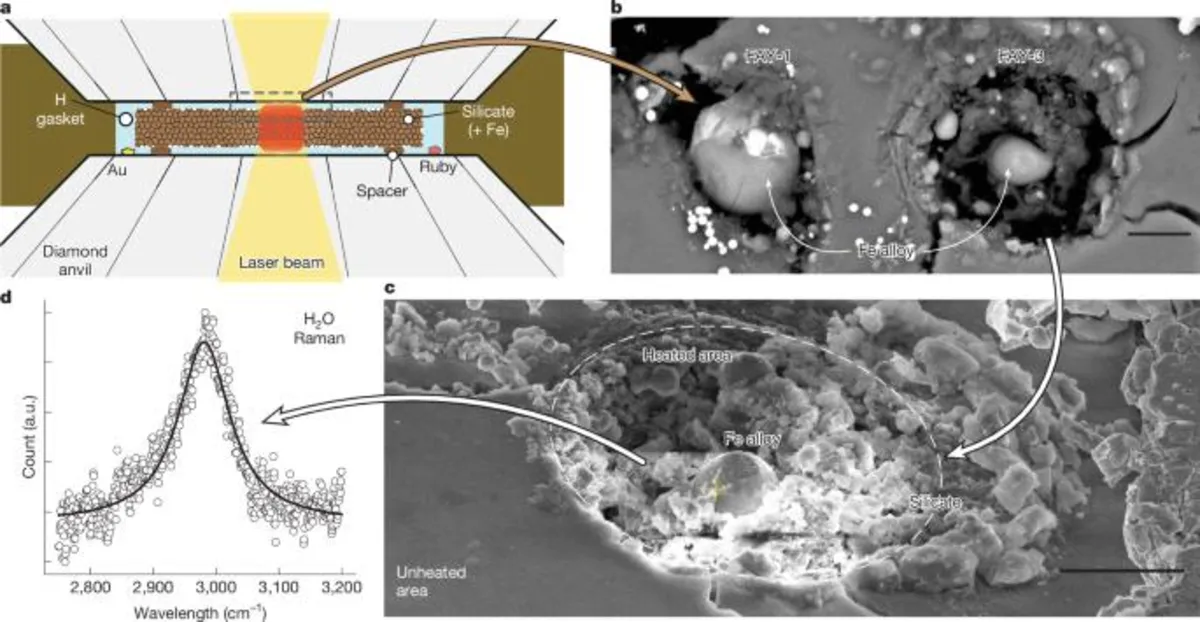
Water is a fundamental building block of planets and plays a critical role in determining their potential for habitability. The theory that water is incorporated into planetary bodies through condensation at low temperatures in the outer regions of the protoplanetary disk effectively explains the structure of our solar system. Here, the inner planets are primarily dry and rocky, often receiving only a small influx of water from the outer solar system, while Uranus and Neptune, classified as ice giants, are located beyond the so-called snow line.
Interestingly, some hydrogen-rich gas from the nebula may have been trapped and converted to H2O deep within the Earth's interior through reactions with silicates. NASA's Kepler mission has identified numerous close-in transiting exoplanets, varying in size from Earth-like to Neptune-like (1–4 Earth radii, RE). The composition of planets with radii between 2–4 RE is often modeled to include rocky cores surrounded by envelopes rich in hydrogen or water, leading to ambiguity in their formation processes. A notable feature is the so-called radius valley, identified between 1.5–2 RE, which separates planets into two distinct categories: super-Earths (rocky with minimal atmospheres at 1–1.5 RE) and sub-Neptunes (rocky cores with substantial atmospheres at 2–4 RE).
Models that account for significant gas loss help explain this radius valley and support the hypothesis of hydrogen-rich atmospheres. Alternatively, other models suggest the existence of two distinct groups of planets: one that is dry and the other that is water-rich. Some planetary systems may even contain water-rich sub-Neptunes. A critical question arises regarding the existence of planets with a high water mass fraction in close-in orbits if water was primarily formed in the outer regions of the system during their formation phase.
In classical models of sub-Neptunes, it is generally assumed that hydrogen does not react with the metallic and silicate cores. However, interactions between hydrogen and silicate magma have been explored. Under conditions of low pressure and high temperature, hydrogen can reduce cations in silicates and oxides, generating water through hydrogen oxidation. Experimental data indicates that hydrogen can convert Fe2+ to Fe0 in molten silicates, thus producing water at low pressures. This behavior extends to higher pressures, where the dynamics of hydrogen in protoplanetary disks suggest that most iron is metallic, leaving limited amounts of Fe2+ and Fe3+.
Our studies employed a combination of pulsed laser heating with a diamond-anvil cell to explore hydrogen-silicate reactions under conditions representative of the core-envelope boundary (CEB) of sub-Neptunes. A mixture of San Carlos olivine and iron metal was melted in a hydrogen medium at 8 GPa. Post-heating X-ray diffraction (XRD) revealed no peaks from silicates, indicating that the Si4+ present in the silicate melt was reduced to Si0, forming alloys with iron. This reduction process suggests significant interactions between hydrogen and silicate components, leading to the generation of water.
The CEB of sub-Neptunes is a crucial region where dense fluid hydrogen could react with silicate melts. Our findings indicate that substantial quantities of water can be produced under these conditions, with implications for the evolution of planets like sub-Neptunes. The relationship between the hydrogen-dominated atmosphere and the potential for water production raises questions about the conditions necessary for these reactions to continue over billions of years.
These experimental results challenge traditional theories which assert that water-rich planets form exclusively outside the snow line. Instead, the mechanisms for endogenic water production observed in our experiments provide a pathway for water-rich sub-Neptunes to form closer to their stars than previously thought. This may indicate that planets formed from dry materials can evolve into water-rich worlds without needing to accrete water ice directly.
In conclusion, our research suggests that the dynamics of hydrogen and silicate interactions at the CEB play a pivotal role in the production of water in various planetary environments. By understanding these processes, we can refine our models of planetary formation and assess the potential habitability of exoplanets. The discovery of significant quantities of water in the atmospheres of exoplanets could therefore be indicative of complex geological processes rather than mere evidence of their formation origins.